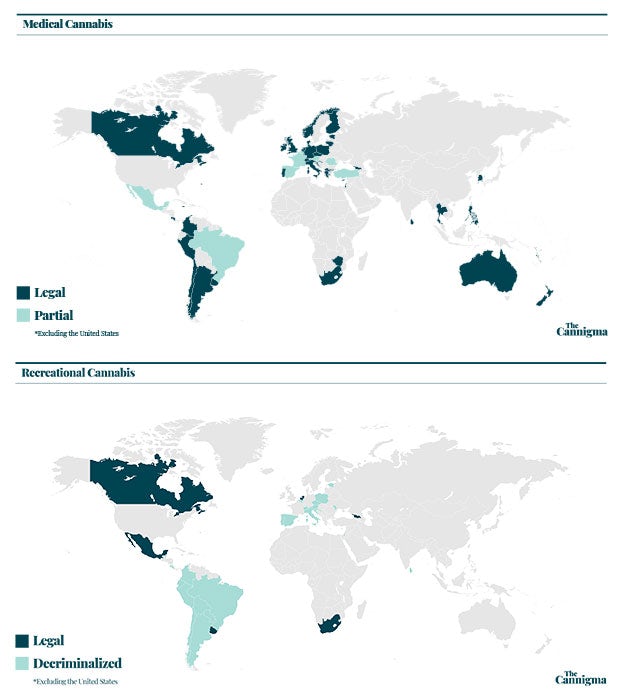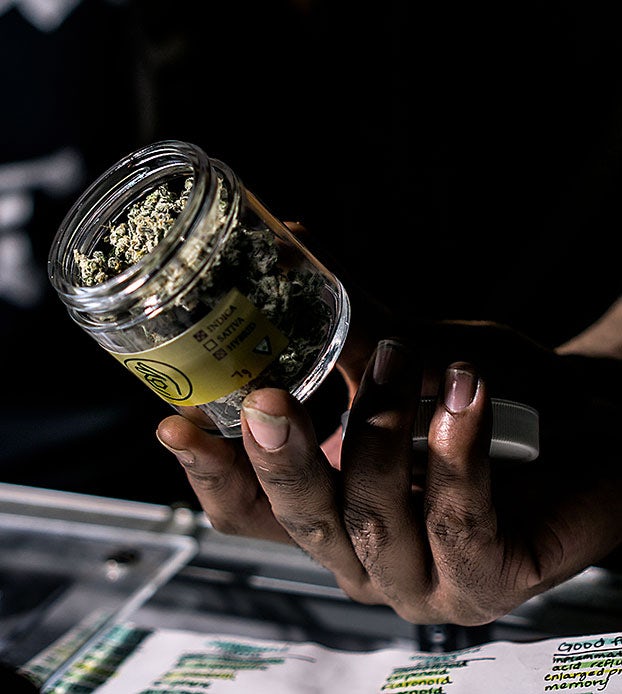For decades, police have had technological tools and standards to test for drunk driving, but those same tools don’t necessarily work for detecting marijuana-impaired driving. With dozens of countries and the majority of US states now having medical or recreational cannabis programs, that is becoming more of an issue.
The most common method of roadside testing is still road-side behavioral or cognitive tests, performed by regular or specially trained officers. In states like Colorado, blood tests are also used if marijuana inebriation is suspected after a behavioral or cognitive test. Across Canada and in Colorado, the maximum legal level of THC for drivers is 5 nanograms of THC per milliliter of blood.
How Cops Weed Out High Drivers
Trusting a road-side behavioral test is difficult, however, which is why several technologies and techniques are being developed for law enforcement agencies and for private cannabis users.
Tongue scraping, saliva samples, and blood/plasma tests are three of the most common methods that law enforcement agencies have at their disposal to test for cannabis-impaired driving.
All three also have significant shortcomings.
The most common chemical roadside test is based on saliva samples, and, although such tests give a detailed picture of THC levels in the saliva, they cannot yet present variations in human tolerance, the amount of time that the THC has been in one’s body, the method of ingestion, or level of intoxication.
The main tool used in Australia, Germany, and the UK to test saliva samples for drugs is the Dräger DrugTest® 5000 — a fast system that can test samples for things like amphetamines, opiates, cocaine, benzodiazepines, methadone, and cannabinoids.
The Problem With Testing for THC
Scraping the tongue is also able to detect THC, but not necessarily its concentration or when it was ingested and it’s not a popular method with law enforcement due to a number of cases being thrown out of court due to a lack of scientific evidence proving the driver’s impairment.
A central issue with both of these methods is false positives. Independent tests of the Drager DT5000 machine found that it came up with false positives roughly 10% of the time.
In addition, if someone has consumed hemp seeds or hemp oil, both very common food products nowadays, tongue scraping/saliva testing may reveal a false positive. This is also true with ibuprofen, naproxen, and other medicines.
Blood tests provide a full toxicology report, including an entire breakdown of cannabinoids and their metabolites, which is the most definitive way to conclude the time of probable impairment due to THC. However, blood tests are not roadside-friendly, take far longer to execute, and are not immune from the challenge of proving actual impairment.
Testing for alcohol is a lot more definitive as blood alcohol levels more directly correspond with levels of impairment. That is not the case with cannabis. Each person metabolizes THC and cannabinoids differently, and THC can be detected for anywhere between 1-30 days after use, depending on the frequency of use and the body fat of the individual, as THC is fat-soluble.
“We just don’t know whether or not that means they’re still intoxicated, or impaired or not,” Tara Lovestead, a chemical engineer at the National Institute of Standards and Technology, said of the 5ng THC blood limit in Colorado in an interview with NPR. “There’s no quantitative measure that could stand up in a court of law.”
Does Tech Hold the Key?
Cannabis as an industry is growing exponentially and dozens of companies are developing solutions to the problem of how to measure and detect marijuana impairment.
A Canadian-based startup, SannTek Labs, has developed a hand-held device that utilizes nanotechnology, the SannTek 315 Breathalyzer. The company says the device is able to decipher just how much cannabis has been smoked, or otherwise consumed, over the previous 3-4 hours.
Another Canadian startup, Guard-Ex, has already run successful pilot testing programs with the Canadian Waterloo Regional Police and the North Bay Police in Ontario, Canada. Their product, the GX-420 looks like a suitcase with a built-in VR headset and uses artificial intelligence to analyze the patterns of an individual’s physiological signals to screen impairment.
An Israeli company, Otorize, has developed a cognitive impairment test in the form of a downloadable app called DRUID that drivers can give themselves before getting behind the wheel. The company hopes that this self-regulating approach will reduce the likelihood of damage, accidents, injury, and death.
How to Stay Safe
If you do consume smokable cannabis products, you should know how long you should wait before getting behind the wheel as it does differ with edibles and other ingestion methods.
Generally, the effects of inhaled cannabis could last six hours or more, according to the Health Canada website. But if you eat or drink it, the effects could last up to 12 hours.
As mentioned, every person metabolizes THC differently, but the guidelines listed by the Canadian Health Ministry could serve as a good best practice to follow, and hopefully save you from a road collision. They recommend that you plan ahead by doing things like making sure you have a designated driver, take public transport, or call a cab or a ride-sharing service.
As law enforcement tests and adopts new methods of testing for THC impairment, the best thing to do would be not to drive a vehicle if you have ingested, or, plan to ingest cannabis products.
Sign up for bi-weekly updates, packed full of cannabis education, recipes, and tips. Your inbox will love it.

 Shop
Shop Support
Support
















